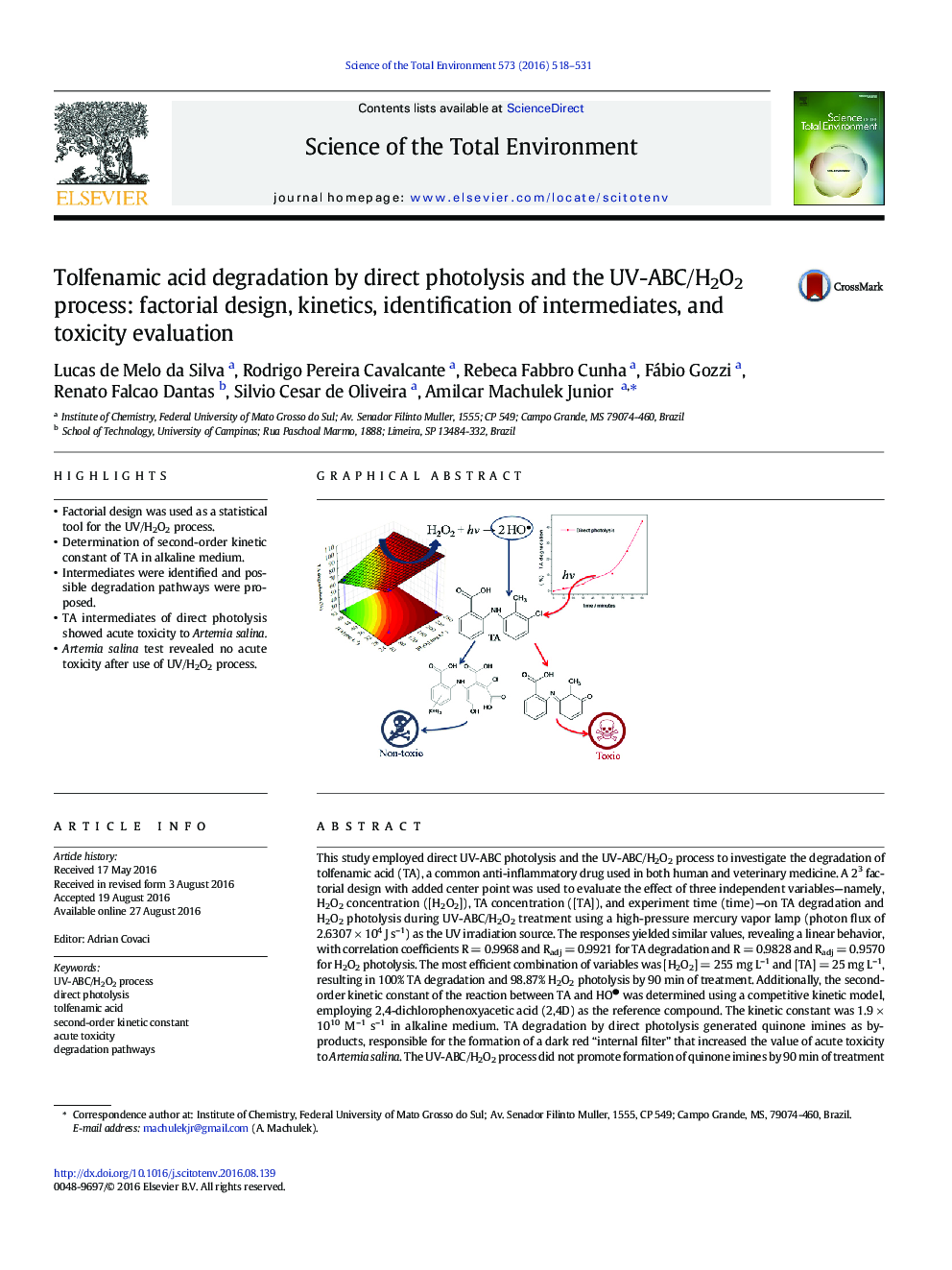| کد مقاله | کد نشریه | سال انتشار | مقاله انگلیسی | نسخه تمام متن |
|---|---|---|---|---|
| 6319788 | 1619718 | 2016 | 14 صفحه PDF | دانلود رایگان |

- Factorial design was used as a statistical tool for the UV/H2O2 process.
- Determination of second-order kinetic constant of TA in alkaline medium.
- Intermediates were identified and possible degradation pathways were proposed.
- TA intermediates of direct photolysis showed acute toxicity to Artemia salina.
- Artemia salina test revealed no acute toxicity after use of UV/H2O2 process.
This study employed direct UV-ABC photolysis and the UV-ABC/H2O2 process to investigate the degradation of tolfenamic acid (TA), a common anti-inflammatory drug used in both human and veterinary medicine. A 23 factorial design with added center point was used to evaluate the effect of three independent variables-namely, H2O2 concentration ([H2O2]), TA concentration ([TA]), and experiment time (time)-on TA degradation and H2O2 photolysis during UV-ABC/H2O2 treatment using a high-pressure mercury vapor lamp (photon flux of 2.6307 Ã 104 J s-1) as the UV irradiation source. The responses yielded similar values, revealing a linear behavior, with correlation coefficients R = 0.9968 and Radj = 0.9921 for TA degradation and R = 0.9828 and Radj = 0.9570 for H2O2 photolysis. The most efficient combination of variables was [H2O2] = 255 mg L-1 and [TA] = 25 mg L-1, resulting in 100% TA degradation and 98.87% H2O2 photolysis by 90 min of treatment. Additionally, the second-order kinetic constant of the reaction between TA and HOâ was determined using a competitive kinetic model, employing 2,4-dichlorophenoxyacetic acid (2,4D) as the reference compound. The kinetic constant was 1.9 Ã 1010 M-1 s-1 in alkaline medium. TA degradation by direct photolysis generated quinone imines as by-products, responsible for the formation of a dark red “internal filter” that increased the value of acute toxicity to Artemia salina. The UV-ABC/H2O2 process did not promote formation of quinone imines by 90 min of treatment and therefore did not increase acute toxicity values. Several by-products generated during TA degradation were identified and possible degradation pathways for the UV-ABC and UV-ABC/H2O2 processes were proposed.
175
Journal: Science of The Total Environment - Volume 573, 15 December 2016, Pages 518-531